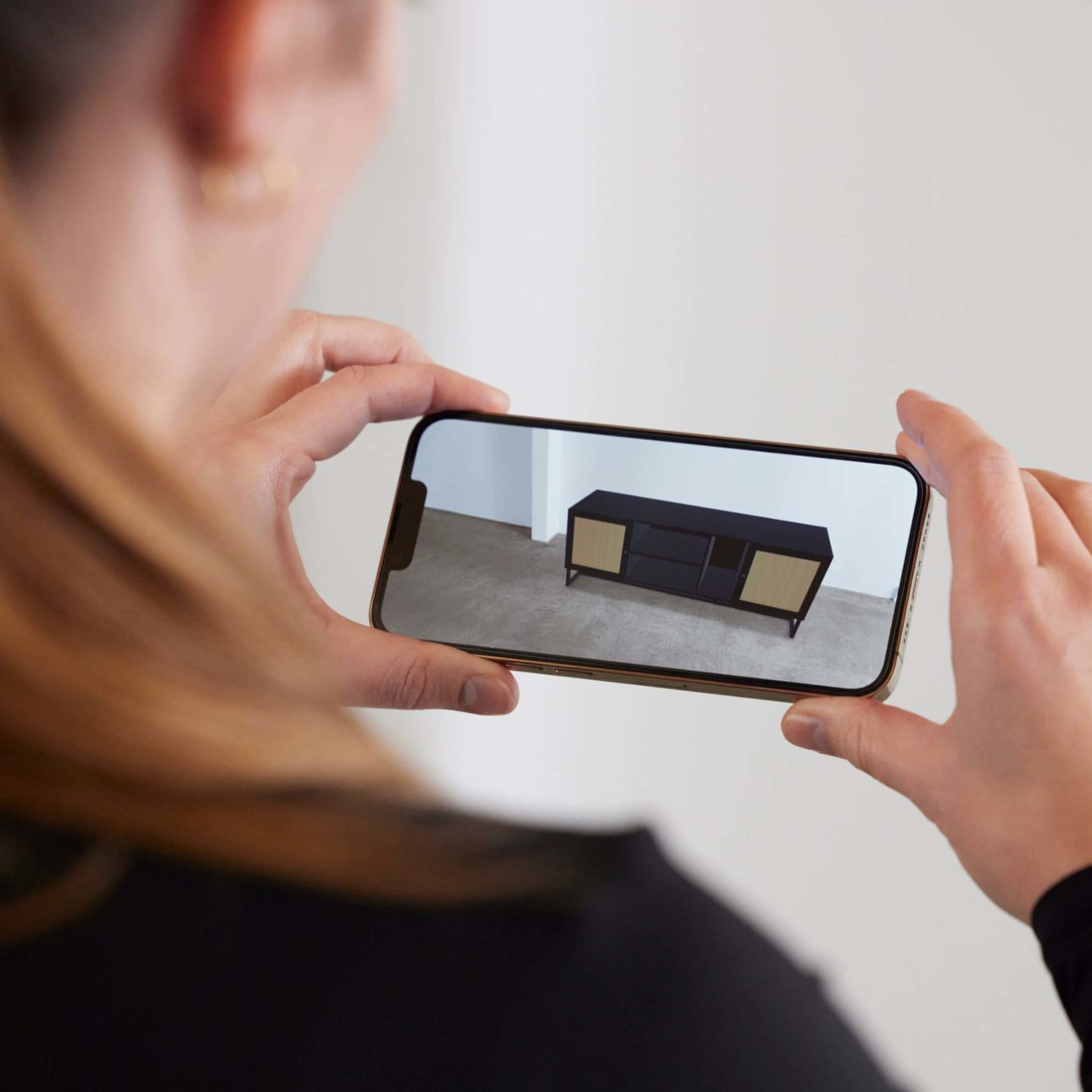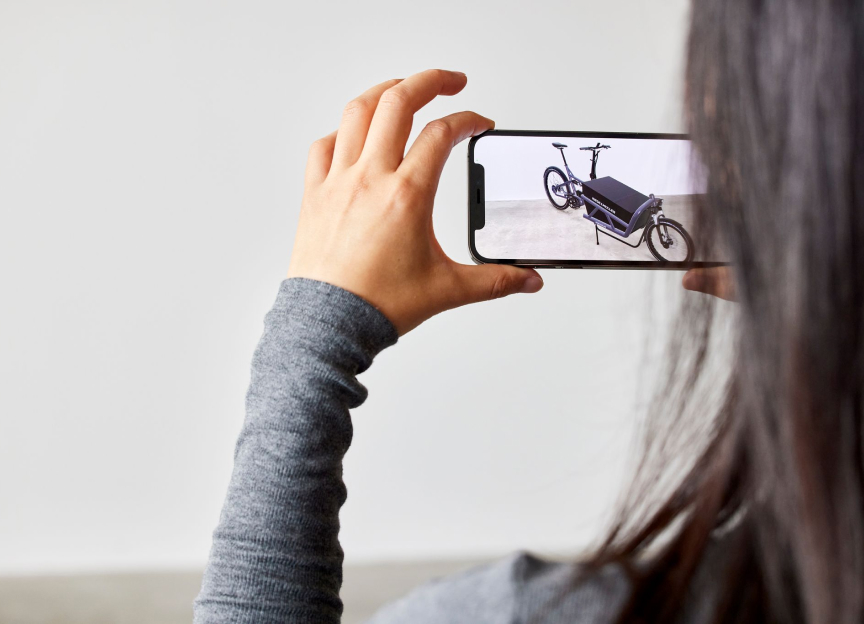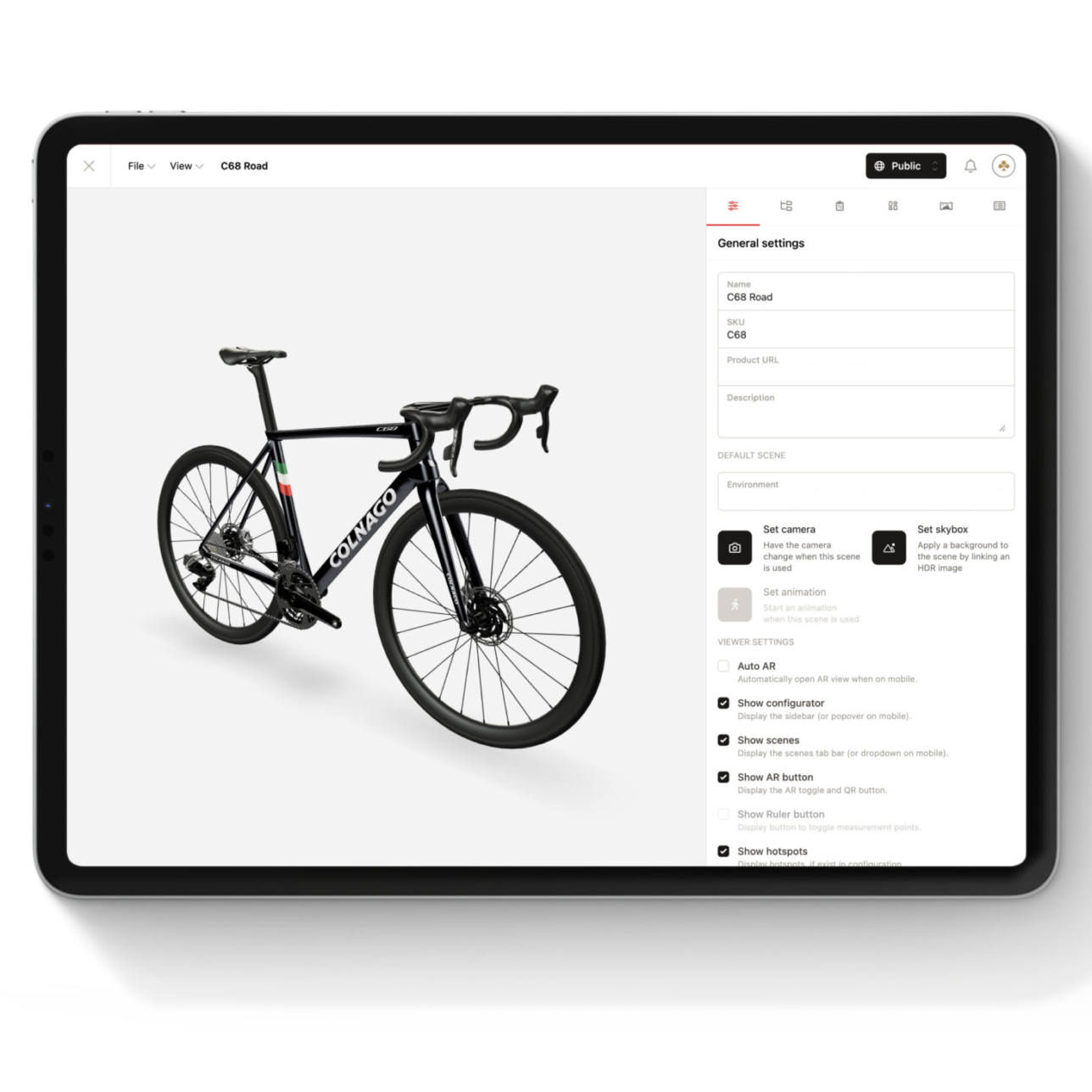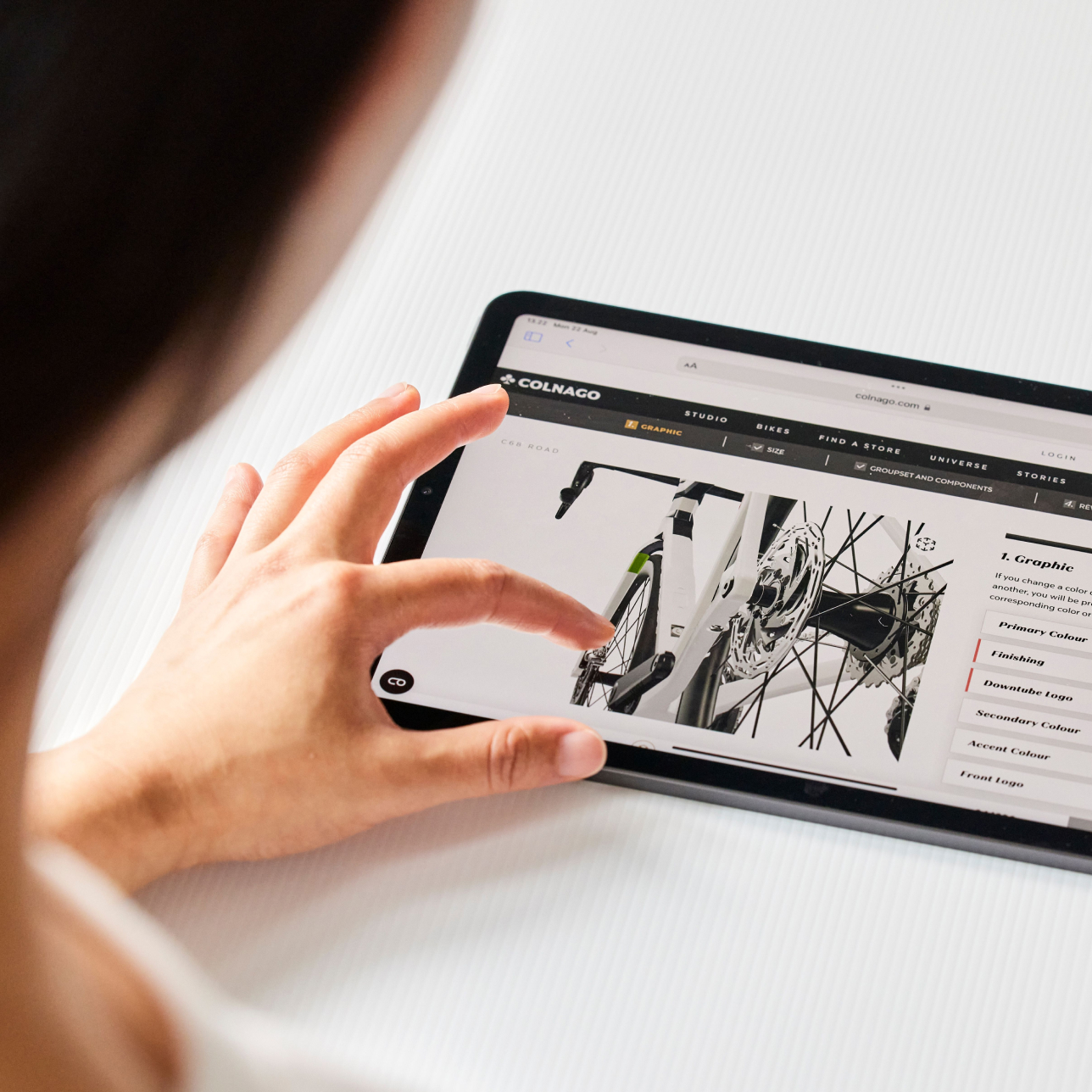AR in eCommerce: Rethinking the online shopping experience in 2025

From the popularity of Snapchat filters to Pokémon Go it’s safe to say that most people have heard of augmented reality (AR) in 2025.
But despite this familiarity AR has yet to become a mainstream technology beyond mostly entertaining applications.
That’s beginning to change.
AR technology has been quietly gaining traction in the eCommerce space over recent years, offering brands new and immersive ways to engage customers and enhance the online shopping experience.
From lifelike in-room product visualizations to virtual try-ons, AR can empower customers to make more confident purchasing decisions. Let’s explore how AR is shaping eCommerce, its benefits and limitations, and how many industries are already leveraging this technology.
What is AR in eCommerce?
Augmented Reality (AR) in eCommerce refers to the superimposition of digital assets such as images, videos or 3D models into the real-world environment of online shoppers, using devices such as smartphones, tablets and AR headsets or glasses.
AR allows online customers to virtually interact with products, visualizing them within their own spaces or on their bodies.
This technology enables experiences like virtual try-on (VTO) for clothing and accessories or placing furniture within a room to assess its fit and style. By overlaying digital content onto the physical world, AR enhances the online shopping experience, making it more interactive and informative, which has proven to result in increased buyer confidence and sales.
“AR can transform customer experiences by allowing users to visualize not only the product but its context in lifestyle, such as seeing a virtual design of a living room featuring a brand’s furniture. This type of augmented storytelling can improve emotional connections with the brand.”
– Milan Kordestani, CEO, Ankord Media
5 primary benefits of AR in eCommerce
- Enhance Customer Experience – AR enhances product visualization, allowing customers to see and interact with 3D models of products in their own space, providing a clearer sense of size, fit and style.
- Increased Confidence & Reduced Returns – by offering lifelike product visualizations via VTO or product previews, customers can make more informed purchase decisions, leading to fewer returns.
- Stronger Brand Differentiation – offering innovative AR experiences sets brands apart from competitors using traditional static product images and positions them as tech-forward leaders in their industry.
- Personalized Opportunities – AR-compatible configurators enable real-time product customization, allowing customers to tailor products to their preferences. This interactive personalization enhances customer satisfaction and can lead to higher conversions.
- Data-Driven Insights – brands can gather valuable data from AR interactions, including user preferences and behavior, which helps refine product offerings and marketing strategies.
“Having collaborated with AI-focused companies, I’ve noticed a game-changing potential for AR in predictive styling. By combining AR with AI data analytics, we craft a shopping experience where users can see how recommended outfits look on them virtually. This data-driven approach caters to individual styles in real-time, fostering a more custom shopping journey and boosting sales conversions.”
– Divyansh Agarwal, Founder, Webyansh
5 potential challenges of AR in eCommerce
- Device Dependency – AR can require users to download apps or rely on devices with advanced AR capabilities. This creates barriers to accessibility and can limit AR adoption. However, browser-based AR allows easier direct access through standard web browsers, making AR more widely available.
- Development or Investment Costs – in-house or outsourced AR implementation can be costly, which some small businesses may find prohibitive. However, businesses of all sizes have seen considerable ROI as AR enhances customer engagement and increases sales.
- User Adoption – while AR adoption is growing, many consumers are still unfamiliar with AR in an online shopping context and may not know how easy it can be to use. This risks lower adoption rates without effective education and promotion.
- Performance & Quality Issues – lagging or poor-quality rendering can frustrate users and harm brand perception. Choosing a high-quality, cloud-hosted AR solution with a proven track record of excellence ensures reliable performance, faster load times and scalable infrastructure.
- Measuring ROI – tracking AR’s impact and ROI can be challenging without clear metrics and analytics integration. Brands should therefore ensure they can integrate AR data into existing analytics tools or choose a provider with built-in analytics and a robust SDK for seamless data integration and actionable insights.
“The main limitation? AR has zero payoff on “meh” products. No one wants to virtually try a basic mug. It forces brands to raise their game or be exposed. AR does not forgive lazy curation. And maybe that is the best part.”
– Danilo Miranda, Managing Director, Presenteverso
(Learn more about London Dynamics’s browser-based, remotely hosted AR solution)

Where is AR making the biggest impact in eCommerce in 2025?
AR visualization is redefining how retailers and customers connect, creating immersive interactions that bridge the experience of digital and in-store shopping. While its applications span an increasing number of industries, certain sectors – with some help from London Dynamics – are seeing its most transformative effects.
Furniture & Home Décor
Online shoppers can visualize how furniture and décor items will fit and look in their own living spaces with the power of AR visualization and their smartphones or tablets.
Example – international furniture retailer Crate & Barrel incorporated AR visualization as well as 3D product configuration on their website and saw significantly increases in engagement and sales as a result.
Automotive
Online car shoppers can use AR to simulate the showroom experience anywhere to virtually explore vehicle features, colors, trims and customizations.
Example – one of the world’s largest online automotive marketplaces, AutoTrader, is using AR experiences to allow customers to virtually explore and personalize their dream cars.
Fashion & Apparel
AR-driven VTO technology has allowed online shoppers to see how clothing and accessories such as glasses and jewelry will look on them in AR fitting rooms.
Example – American eyewear brand Warby Parker have differentiated themselves from their competitors by offering virtual glasses fittings, reducing the guesswork of online eyewear shopping.
Beauty & Cosmetics
AR applications allow online users to virtually apply makeup or test skincare products, helping them choose their preferred shades, formulas and application methods.
Example – global cosmetic brand Sephora has a Virtual Artist app that uses AR to realistically simulate makeup application, enhancing customer confidence and driving sales.
“When a customer places a product in their space with AR, comparison disappears. No alt-tab. No second tab. No digging through specs. The item enters their context, and that compresses the sales loop. Once someone sees a 1.8-meter bookshelf on their own wall, in real lighting, the gap between doubt and checkout closes fast.”
– Anders Bill, Cofounder/CPO, Superfiliate
The evolution of AR in eCommerce
While AR in eCommerce continues to see more widespread adoption, we are also seeing an evolution from straightforward product visualizations to more complex and interactive experiences.
Basic AR overlays are becoming increasingly lifelike with ever more realistic 3D product visualizations. These are being augmented further with the application of AI and machine learning to deliver more personalized customer interactions.
Accessibility to AR technology has also been accelerated with the advent of WebAR. This allows online shoppers to operate AR visualization directly on their smartphones or tablets within web browsers using QR codes and without the need for inconvenient AR app downloads.
“AR was really useful when I shot a UGC video for a brand selling adjustable standing desks. They had an app where users could see the desk in their room through their phone before buying. That video showed how people could walk around the virtual desk and view it from different angles. It reduced doubts about fit and size and […] returns went down 23% after launching the AR tool alongside our content push.”
– Natalia Lavrenenko, UGC manager/Marketing manager, Rathly
The future of AR in eCommerce
Looking ahead, AR is poised to further transform the eCommerce landscape by expanding on the growing integration of AR, virtual reality (VR) and AI. The line between real-world and digital shopping experiences will continue to blur until they are “virtually” indistinguishable.
The average shopper of the not-too-distant future will be navigating immersive online stores on a daily basis, interacting with true-to-life 3D versions of products that they can customize, try out and then order all from the comfort of their own spaces.
The wholesale adoption of the metaverse – a collective virtual shared space – will offer more dynamic environments where users can shop, socialize and engage with brands in unprecedented ways.
Additionally, technologies such as Gaussian splatting are enhancing the realism of 3D visualization, paving the way for photorealistic virtual storefronts. As these innovations continue, the distinction between online and offline shopping will diminish, ushering in a new era of interactive and personalized eCommerce.
Emerging AR innovations in Retail
Here are some of the most exciting AR-driven retail innovations to look out for both online and in-store shopping over the coming years:
- AR Mirrors 🪞
Virtual mirrors in stores allow shoppers to see how clothes, accessories or makeup look on them with lifelike avatars or overlaying items on their actual reflection.
- AR/Virtual Showrooms 🛋️
Brands can create immersive, 3D virtual showrooms where customers can explore products such as cars, furniture and gym equipment in a realistic environment, often from their own homes or workplaces.
- Interactive Packaging 📦
AR-enabled packaging adds digital layers to physical products, providing users with interactive and eco-friendly content like tutorials, product information or recycling recommendations.
- In-Store Navigation 🧭
AR-powered mobile apps or in-browser features can guide shoppers through stores using interactive maps and 3D digital overlays, helping them find products, promotions and even real-time deals with ease.
“Looking ahead, the integration of AR with AI could offer even more personalized shopping experiences. Imagine an AR system that analyzes your previous shopping behaviors and current trends to recommend and project products that suit your tastes right into your living room.”
– Alex Cornici, Writer, Insuranks
Choosing the right AR partner
For brands looking to tap into the transformative power of 3D and AR in eCommerce, the ever-changing landscape can be intimidating. The right AR software provider can simplify that journey.
London Dynamics offers an end-to-end AR solution that is designed to integrate seamlessly with your existing digital ecosystem.
From AR product visualization to real-time analytics and performance tracking, we can provide the tools you need to enhance customer experiences, drive sales and grow your business.
Learn more about how London Dynamics can elevate your eCommerce strategy by getting in touch with our team today.

Schedule a 30 minute introductory call with our team to learn more about the opportunities for your business.
Blog.
We’re working at the forefront of digital technology and believe in sharing knowledge within the industry to help elevate and unlock the power of 3D and AR.



